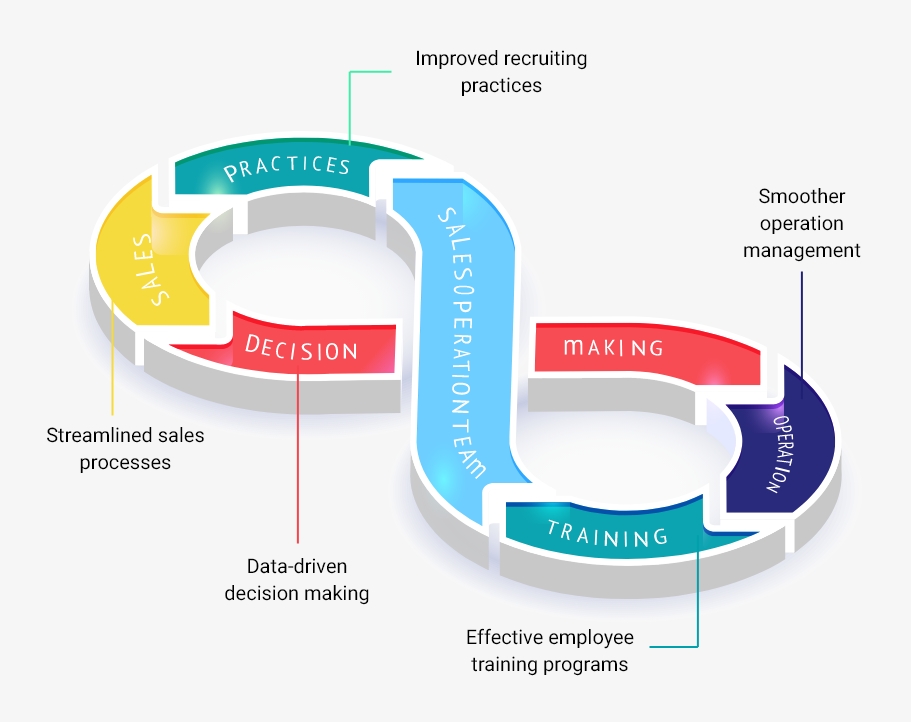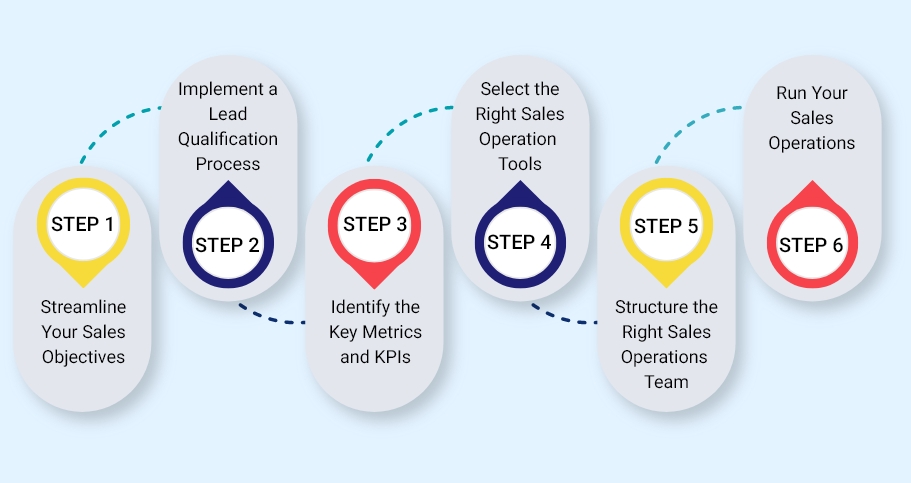Subscribe to Our Newsletter
Stay updated with the latest tips and strategies. Get additional discounts and alerts on offers.

The term sales operations can mean a multitude of things to different teams and organizations. Besides, the core of sales operations is enabling and supporting sales teams with strategic direction to sell more efficiently. The sales operation process includes the day-to-day tasks and activities that need to be completed by sales reps, such as completing stages on a B2B sale pipeline to recording data in your CRM software. Having a sales operation team can benefit your company with the following:

Increased companies are forming sales operations teams nowadays, and for a good reason. It is essential to the company’s business operations, functions, and overall success. The main aim of having a sales process is to build systems and implement technologies to hit their targets. The sales operation team’s activities and processes leverage big data and sophisticated tools to run other departments. As per a study conducted by McKinsey, companies with world-class sales operations teams see a growth of 20–30% in their sales productivity.
The sales team gathers data to analyze the sales process
Create and implement a sale operation strategy to optimize efficiency
Implement technology that can automate tasks and improve workflow
Facilitate better communication across different teams
Finally, assess the results and restart the sales operation process

A mission statement can streamline non-related sales activities, optimize the sales process, and offer additional sales training. Putting together a team that can execute tasks is no easy feat either. You will need the plan to build the right team that will aid the company in recruiting or training employees. Using a business plan template can help you complete this step faster.

Once the lead qualification process is set, the team must select sales metrics that will aid them in evaluating a campaign for the various parts and stages. The Key Performance Indicators (KPIs) act as an objective for how your sales team performs their roles and responsibilities. They also allow the team to identify the areas that need improvement in the future. Set marketing metrics for the total revenue generated, deals closed, or calls made, and the desired conversion rates.

These tools are designed to aid companies in interpreting heaps of data gathered during the sales process. Once the campaigns are sent out, the team will need analytical tools to check their performance and scale the business.

CRM tools allow companies to manage all their interactions with prospective customers. It is an all-in-one platform to store customer data and utilize it to create personalized campaigns.

These tools are excellent in identifying the right target audience that matches your ideal customer persona and is interested in your company's solution. It aids a sales team in finding prospects most likely to convert into customers.
The head of sales will hire a technical operations advisor, who will be responsible for handling the handle reporting and analytics. Tracking sales operation KPIs is essential for the team's growth strategy; hence it is important to choose the perfect candidate for this role.
This professional is tasked to aid the sales and marketing teams by handling and managing a sales process workflow. The main responsibility is to improve the sales cycle. Some companies make their technical operations advisor the go-to CRM administrator who provides relevant information for the sales team.
This professional must be hired only if the company wants to expand the sales team. They are essential in the team as they tend to have extensive sales knowledge and experience to enhance the results and reach the goals of the sales department. A sales effectiveness manager is also responsible for handling new sales department members' onboarding and providing them with the necessary training.
This professional can take sales operations to the next level and enhance results. They are usually tasked with creating a sales-operating plan and overseeing the strategic vision of the sales team. They are also responsible for making the sales forecast and deciding on new technology for the sales team.
A well-planned sales process can optimize the sales processes to enhance your B2B sales cycle, identify inefficiencies, onboard new hires, document data, and reduce bottlenecks. Sales operational professionals drive strategy, performance, and sustainable growth. The above steps will aid you in creating the perfect sales operation process to achieve company goals and objectives. We hope that part one of this blog helped you understand the sales operation process and its importance.
The sales and operations process steps are:
Show Some Love!

Subscribe to Our Newsletter
Stay updated with the latest tips and strategies. Get additional discounts and alerts on offers.
Related Articles
Subscribe to Newsletter
Stay up to date with the latest marketing, sales, and service tips and news.
Subscribe Now!
Enter Your Details
